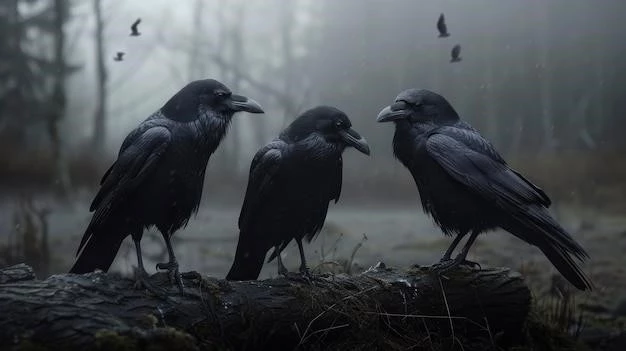The Intelligence of Crows: Problem-Solving and Communication in Corvids
Crows, ravens, rooks, and jays, collectively known as corvids, are renowned for their intelligence, exhibiting remarkable problem-solving abilities and sophisticated communication systems․ Their cognitive prowess has captivated scientists and bird enthusiasts alike, prompting extensive research into the intricacies of their mental capabilities․
Problem-Solving Prowess
Corvids are known for their ability to solve complex problems, often utilizing tools and displaying ingenuity in their strategies․ One striking example is the New Caledonian crow, which has been observed crafting tools from twigs and leaves to extract grubs from holes․ They exhibit a remarkable understanding of cause and effect, employing tools with precision and adapting their techniques based on the specific challenge․
- Tool Use and Innovation: Corvids, particularly New Caledonian crows, demonstrate an exceptional ability to use tools for acquiring food and manipulating objects․ This tool use often involves complex steps, such as bending and shaping materials to create suitable implements․
- Problem-Solving Strategies: Corvids employ a variety of problem-solving strategies, including trial and error, insight, and planning․ They can remember past experiences and apply them to new situations, showcasing their ability to learn and adapt․
- Spatial Reasoning: Corvids exhibit exceptional spatial reasoning skills; They can remember the locations of food caches, even after long periods of time, and navigate complex environments․
Communication and Social Intelligence
Corvids are highly social animals, engaging in complex interactions and displaying sophisticated communication systems․ Their vocalizations are diverse and nuanced, conveying a range of messages, including alarm calls, food calls, and territorial boundaries․
- Vocalizations: Corvids employ a wide array of vocalizations, including calls, whistles, and croaks․ These sounds are used for communication, including alarm calls, food calls, and social interactions․
- Social Learning: Corvids are highly social learners, acquiring new behaviors and knowledge from observing others․ This social learning plays a crucial role in their problem-solving abilities and communication skills․
- Cooperation: Corvids can cooperate with each other to achieve common goals, such as defending territories or finding food․ This cooperation requires a level of social intelligence and understanding of group dynamics․

Brain Structure and Cognitive Abilities
The intelligence of corvids is linked to their unique brain structure․ Their brains are relatively large for their body size and contain a high density of neurons, particularly in areas associated with learning, memory, and problem-solving․
- Brain Size and Structure: Corvid brains are relatively large in proportion to their body size, suggesting a high level of cognitive capacity․ They have a high density of neurons in areas associated with learning, memory, and problem-solving․
- Neocortical Development: The neocortex, the part of the brain responsible for higher cognitive functions, is well-developed in corvids, contributing to their remarkable intelligence․
- Neuroplasticity: The ability of the brain to change and adapt in response to experience is known as neuroplasticity․ Corvid brains exhibit high levels of neuroplasticity, enabling them to learn and adapt throughout their lives․
Implications for Understanding Intelligence
The intelligence of corvids challenges traditional views of animal cognition․ Their problem-solving abilities, complex communication systems, and social interactions demonstrate that intelligence is not limited to primates and humans․ By studying corvids, we gain valuable insights into the evolution of intelligence and the underlying mechanisms of cognition․
- Evolution of Intelligence: Corvids provide a fascinating model for studying the evolution of intelligence, showcasing the development of complex cognitive abilities in non-primate lineages․
- Animal Cognition: Corvids challenge our understanding of animal cognition, demonstrating that intelligence can manifest in diverse forms across the animal kingdom․
- Conservation and Ethical Considerations: Understanding the intelligence of corvids raises ethical considerations regarding their treatment and conservation․ Their cognitive abilities highlight their importance in the ecosystem and the need to protect them from threats such as habitat loss and climate change․

Conclusion
The intelligence of crows and other corvids is a testament to the remarkable diversity of cognitive abilities in the natural world․ Their problem-solving prowess, sophisticated communication systems, and social intelligence challenge traditional views of animal cognition and provide valuable insights into the evolution and mechanisms of intelligence․ As we continue to unravel the mysteries of their minds, we gain a deeper appreciation for the complexity and wonder of the animal kingdom;










